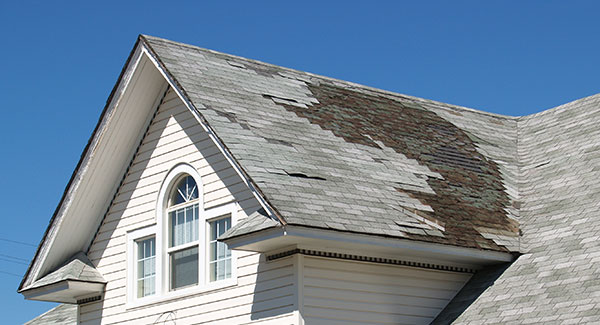How to Identify and Take Care of a Leaking Roof
Author: Lee Polevoi | August 18, 2023
A leaking roof can be a big headache for homeowners. The good news is that consistently checking for signs of a leak — and then contacting a professional roofing contractor if you find one — can often relieve you of this headache, and not necessarily at an exorbitant price.

The longer a leaking roof goes unaddressed, the greater the risk of further problems. Issues can range from mildew and mold to serious water damage inside the house. That's why it's so important to be alert to possible roof leaks and know when to take action.
Common Causes of Roof Leaks
Here are some of the most common causes to look out for:
A Crack in the Flashing
Flashing is designed to close gaps around features like gutters, skylights or chimneys where water can collect and cause potential damage. A missing nail or dried-up adhesive can cause these metal strips to slip out of place, paving the way for possible leaks.
Damaged Shingles
Like all other materials, asphalt shingles are subject to wear and tear from the weather and other factors. A cracked shingle is a fairly obvious cause of a leaking roof, and is often easy to identify from the ground.
Ice Dams
After a severe winter storm, melting snow can gather at the roof's edges and refreeze. This causes blocks of frozen slush called ice dams, which push water up under the shingles where it can seep into decking and your attic ceiling.
Gutter Debris
If your house is surrounded by trees, your roof can easily collect debris like leaves, branches and twigs. These pileups clog the water's flow to a point where the gutters can't channel water away from the roof the way they are designed to. Instead, water seeps under the shingles and causes leaks.
Indoor and Outdoor Signs of a Leaking Roof
Sometimes, water damage is visible before you can spot the leak itself. After extreme weather or when the seasons change, take a walk around your house and look at the roof and gutters. You can safely examine your roof for damage while standing on a ladder, but don't walk around up top without a contractor's safety equipment. It pays to check for these common problems:
Patches of Missing Asphalt Granules
With asphalt shingles, underlying granules can sometimes come loose, leaving bald patches on the roof. Unprotected spots can be a clear sign that something's wrong. You may need to take a picture of a section of shingles and zoom in on the image on a phone or desktop to spot small issues.
Water Pooling in Gutters
A debris-clogged gutter might fill up with water and overflow. Watch for water leaking from gutter seams or broken drainpipes as well.
Stained Soffits and Fascia
The boards protecting the roof's lower edge and underside are called soffits and fascia. Because they protect the gap between the roof and walls, stains or disrepair can be a sign that water is already seeping in.
Water Stains Inside the House
A large water stain on the ceiling is an obvious sign of a leak. After a heavy rainstorm, it's a good idea to do a visual inspection inside the house, especially your attic or top floor, to check for any stains. Knocking on discolored areas with a broom handle can also reveal any wet, spongy areas that need immediate attention.
Most homeowners lack the skill or knowledge to repair a damaged or leaking roof on their own. The key to saving money in the long run is to immediately contact an experienced roofing contractor to schedule an inspection. The contractor will look closely at each potential problem area, and advise on any repairs or shoring up. When small problems are handled promptly, they won't grow into bigger, costlier issues later on.